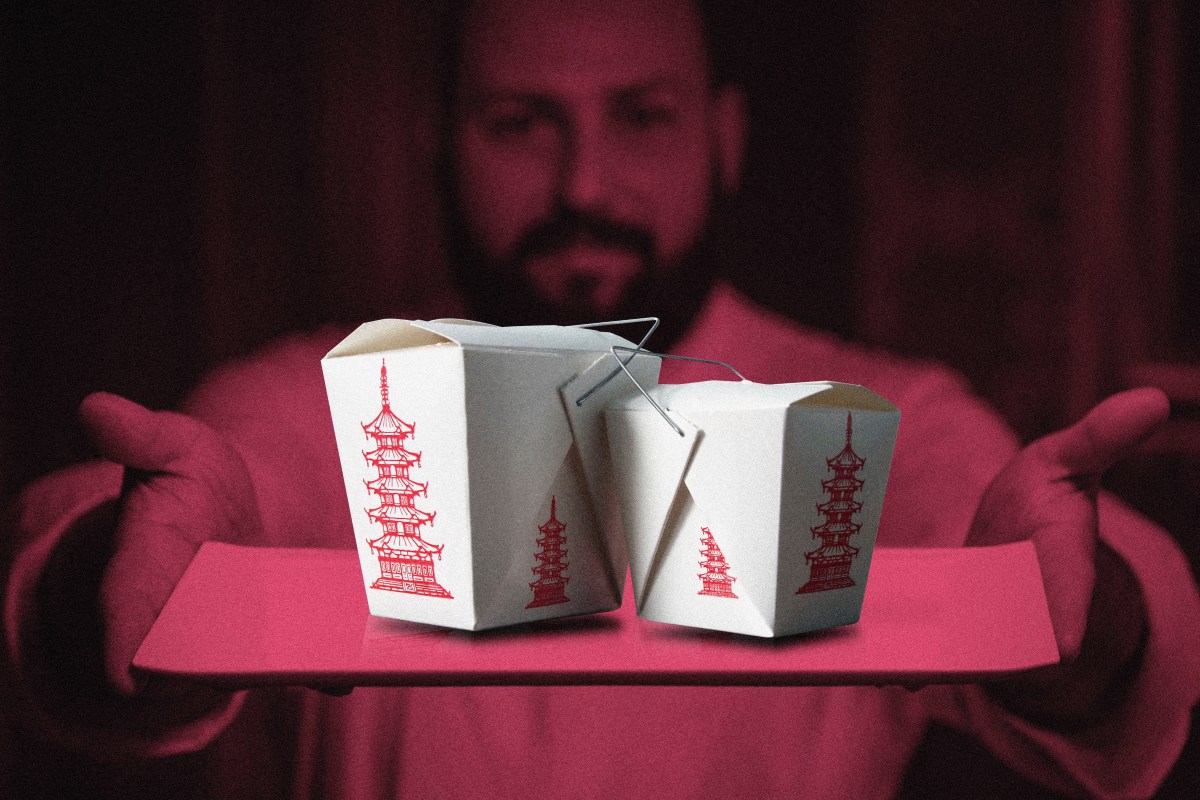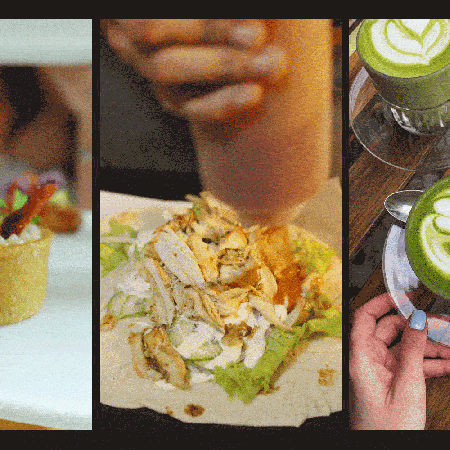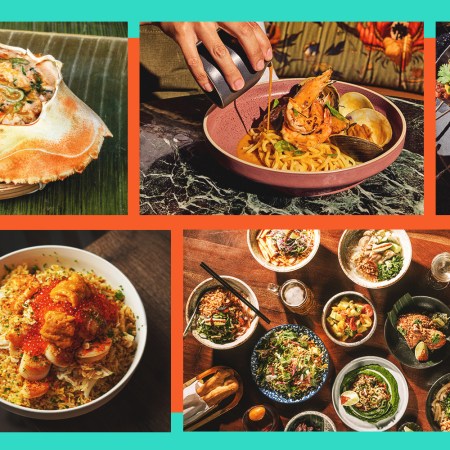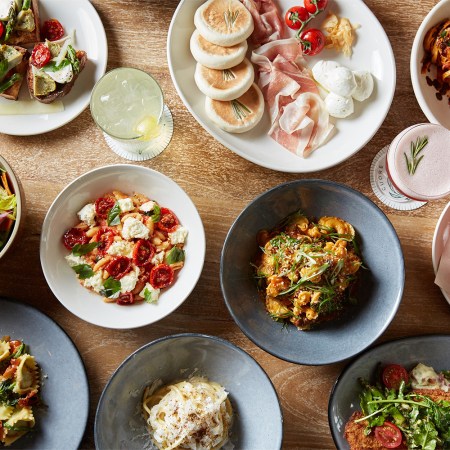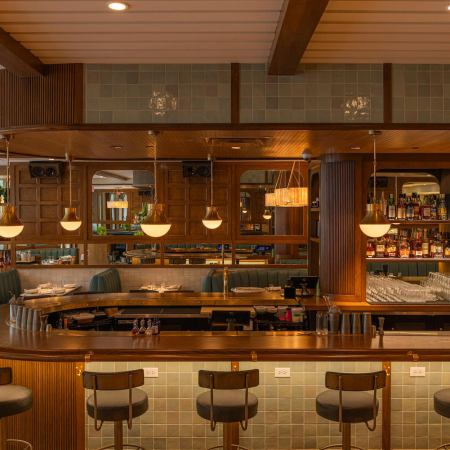This past Monday morning, Otway, a full-service Brooklyn restaurant with fresh baked bread, pastries and seasonal lunch and dinner menus, buzzed with neighborhood chatter. A sprinkling of café regulars sat 10 feet across from one another, gabbing on about working from home, hoarding food and other shared concerns surrounding the global COVID-19 pandemic, now projected to leave 4.6 million Americans, including huge swaths of the restaurant industry, without jobs by summer.
Like many restaurants in New York and around the globe, Otway, a neighborhood mainstay that grosses over $1 million annually, has had to halt dinner service and all on-site dining for the foreseeable future. But that doesn’t mean they’re not trying all they can to do something — anything — to keep business alive.
Owner Samantha Safer tells InsideHook that Otway has adopted a pickup-only model for the foreseeable future. “We still have a daytime cook and as long as she needs a job, we’re here to pay her,” she says. “We basically gave the option to any of our staff yesterday. Anybody who didn’t feel comfortable coming to work, we’d be happy to get their unemployment started immediately, and anybody who wanted to continue working could work pickup.”
Safer’s creative solution is one that’s been adopted by thousands of restaurants, from independently owned restaurants to small-scale hospitality groups and corporate food conglomerates. While high-profile restaurateurs like David Chang and Danny Meyer — along with Tom Douglas, whose 12 Seattle restaurants’ have averaged a 90-percent decline in past weeks — have all closed the doors temporarily, others have agreed to hang in there for as long as possible.
In Los Angeles, Josef Centeno, chef-owner of Bäco Mercat, Bar Ama and Orsa & Winston, transitioned all his restaurants to takeout and delivery-only last Friday. Farther north, in Los Gatos, CA, David Kinch’s extravagant farm-to-table restaurant Manresa, which boasts a $295 per person tasting menu, has also started a pickup model, calling it Manresa Family Meals To Go. Bar Manager Jason Strich points out that “It’s funny to think of a three-star Michelin restaurant doing to-go. It’s never really been done before.”
While pickup may be common for neighborhood-friendly, mid-range priced restaurants, this is strange new territory for the world of fine dining, where guests generally have to book reservations months in advance. Joining Centeno and Kinch are restaurants across the country which have begun to truncate their usual offerings. In Washington, DC, Bad Saint, Izakaya Seki and Little Serrow are all offering onsite pickup, while in New York, swaths of beloved neighborhood spots like MeMe’s Diner in Prospect Heights, Hutong in Midtown and Rucola in Boerum Hill have done the same. Others, like Otway, are offering fresh baked bread and pastries. Frankie’s 457 in Carroll Gardens has moved to delivery platforms like Caviar, Grubhub and Uber Eats, which recently announced that it would waive fees for independent restaurants joining the platform in the wake of COVID-19. And in Philadelphia, mainstays like Oyster House have emptied their walk-in refrigerators of fresh produce and meat, selling to employees laid off after closure and neighbors at retail value, a fraction of what it would normally cost at the restaurant.
Fees for delivery services are generally exorbitant, and the cost benefit is not nearly as high as it is with dining in, where liquor sales make up a massive portion of sales. Essentially, these measures are mirages: they might be good for morale, but not for earnings. They’re small but very real ways of saying “We’re still here.” For Safer and others who already operate their restaurants with incredibly small margins, the threat is astounding — extending not only to owners, but also companies that service restaurants (equipment repair, cleaning services, etc.) and front- and back-of-house staff who no longer have an income, especially those who are on temporary visas or are non-permanent citizens.
In New York, the only semblance of financial solvency that’s been proposed thus far — an interest-free small business loan of up to $75,000 for business that can document a 25-percent loss in customer receipts because of the coronavirus — comes with just as much potential for risk as it does relief. In an effort to be as transparent as possible, Safer posted her outstanding debts and recent sales hits to her personal Instagram story. Last week Otway was down -23.96 percent in sales, which means she couldn’t even qualify for the new assistance program. “I’m sure we could fudge the numbers, but the reality is some businesses weren’t even doing that badly leading up to this,” says Safer. “This was slated to be out biggest year yet.”
If I take on $75,000 in debt, I’ll be paying that off for the remainder of my 10-year lease and I’ll never see a paycheck.
While many restaurant owners have sacrificed their staffs and even their own paychecks, others have gotten creative, pushing back openings and repurposing loans in an effort to keep everyone employed, at least for the time being.
Krimsey’s Cajun Kitchen, a popular southern Cajun-meets-vegan depot in North Hollywood, announced last Friday that they’d be moving to a delivery and pickup-only model. Owner Krimsey Ramsey says that while the restaurant had been taking all the necessary precautions to sanitize and deep-clean everything, it still didn’t seem responsible to stay open. “It’s less about our staff contracting it and more about slowing down the spread,” says Ramsey, who is able to pay her staff through a loan she planned to use for construction on a new Silver Lake location. For now, the construction is on hold while she diverts the funds to pay her employees who would otherwise rely on tips from dine-in customers.
As Ramsey prepares to run her restaurant according to this new model for the foreseeable future, she also plans to bring back some old favorites, including a vegan gumbo and a special dessert or two, and is also considering adding freezer-style dishes. As a smaller business, Ramsey’s venture is a huge risk, but one she hopes will come with a reward. Many of the nation’s major hospitality groups have resorted to similar models, with some even launching corresponding donation initiatives.
Sage Restaurant Concepts, headquartered in Denver with restaurants in Cleveland, Portland, Philadelphia and more, recently launched Keep Calm and Carry Out, a way for each restaurant to continue serving their communities while simultaneously practicing social distance and raising money to help those most affected by COVID-19. The group will be making a $1 donation for every carry-out order placed at a participating SRC location to Feeding America, an organization that helps food banks respond to the new coronavirus outbreak. In Washington, DC, Chef José Andrés announced in a series of tweets on Sunday that he would be transforming some of his restaurants into community kitchens, offering meals as part of his non-profit relief organization, World Central Kitchen.
While these efforts engender the sort of goodwill that’s needed in a time like this, where food is not nearly as available as it typically is to the financially insecure, the reality is that very few chefs can be like José Andrés. The big restaurateurs will likely weather this storm, albeit while taking a few major hits. The restaurants that suffer most will be the mom-and-pops on neighborhood corners, the places that are still paying off loans, the spots that opened in the last year, that just pieced together $4,500 to pay for a liquor license they won’t get to use.
“If I take on $75,000 in debt, I’ll be paying that off for the remainder of my 10-year lease and I’ll never see a paycheck. I also need to count on not getting sick and hope that I am able to be a working partner and don’t have to pay somebody to do my job and that the economy bounces back quickly and we go back to making a million dollars,” says Safer. “Everybody that takes that $75K right now is risking everything. Until someone says, ‘Here’s $20,000,’ I really don’t know what else we can do.”
Safer’s efforts are proof that even the pick-up and delivery-only model can only work for so long. On Tuesday evening, she posted on Otway’s Instagram that Wednesday, March 18, would be the restaurant’s final day of pickup service, citing “service limitations, strain on our bodies, and exhaustion.” The language was upbeat and hopeful for the future, but it’s hard to say what will come next for Otway and countless restaurants and bars across America.
“This will not be the end of Otway,” read the caption. “Everything we sold this week will ensure we have enough capital to pay out staff, close open balances with vendors and continue to pay rent. Every penny earned will ensure the amazing people I work with will have jobs to come back to. Stay safe, take care of each other and please reach out if you need anything. –xoxo Samantha.”
Every Thursday, our resident experts see to it that you’re up to date on the latest from the world of drinks. Trend reports, bottle reviews, cocktail recipes and more. Sign up for THE SPILL now.
